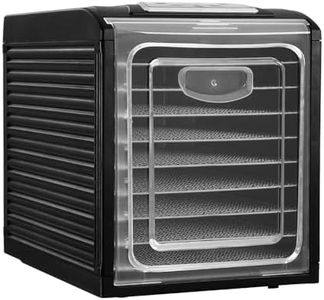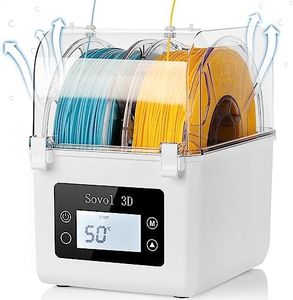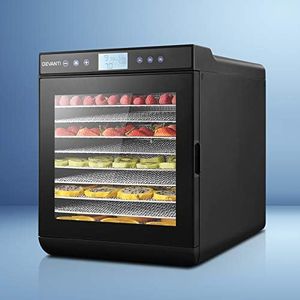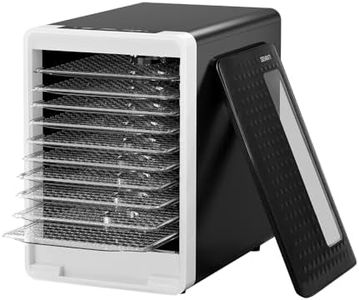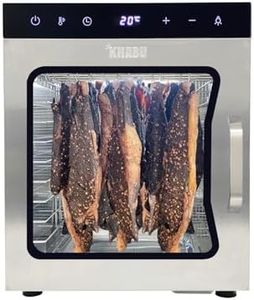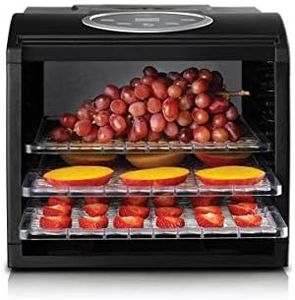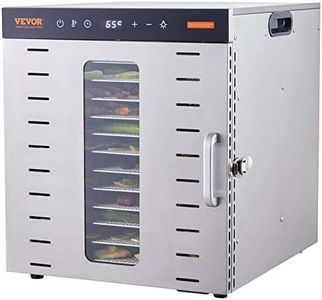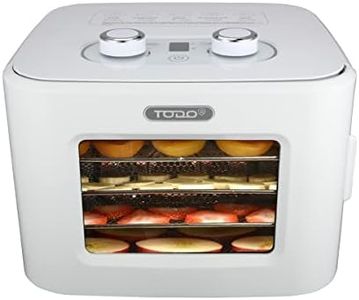We Use CookiesWe use cookies to enhance the security, performance,
functionality and for analytical and promotional activities. By continuing to browse this site you
are agreeing to our privacy policy
10 Best Food Dehydrator For Filament
From leading brands and best sellers available on the web.Buying Guide for the Best Food Dehydrator For Filament
Choosing a food dehydrator for drying 3D printer filament is an effective way to manage filament moisture and prevent print problems like stringing or weak prints. Deeply understanding your usage needs—such as how often you print, what kinds of filament you use, and the space you have—will help you pick a dehydrator that serves you well. The right dehydrator ensures your filament stays dry, thereby extending its shelf life and improving your 3D print results.Temperature RangeThe temperature range refers to how hot the dehydrator can get. For drying 3D printer filament, temperatures usually around 40–55°C (104–131°F) are ideal; higher temperatures can cause some filaments to warp or fuse together. If you use a variety of filaments (like PLA, ABS, PETG, or nylon), check that your dehydrator can operate at the specific range needed for each. Models with adjustable temperature controls are best as they can be tailored to different filament types. Those who print mainly with PLA can use lower temperatures, while users of engineering filaments should look for a dehydrator that reliably reaches and maintains higher temperatures without overcooking the spool.
Internal CapacityInternal capacity means how much space is inside the dehydrator and determines how many filament spools you can dry at once. Smaller units can usually handle one standard spool at a time, making them compact and suitable for occasional users or those with limited space. Larger dehydrators are better for people who own multiple printers or regularly switch between materials, allowing you to dry several spools at once. Assess how often you plan to dry filament and the most spools you might need to dry together, then choose a size that fits your typical workflow without taking up excess space.
Airflow DesignAirflow design refers to how the dehydrator circulates air inside to evenly dry its contents. Some models use vertical airflow, some horizontal, and others have less direct circulation. Consistent, even airflow prevents hot or cool spots which can leave parts of a spool damp. Look for models with fans or circulation systems rather than passive heating, as these ensure filament dries thoroughly and reliably. If you plan to dry large or multiple spools, prioritize an airflow system that can reach all areas inside.
Timer FunctionalityA timer allows you to set how long the dehydrator runs before automatically shutting off. This is useful for drying filament because different materials require different drying times, often ranging from a few hours to a full day. A dehydrator with an adjustable timer helps you avoid over-drying or wasting energy. If you tend to forget about your spools or want peace of mind, a timer is an essential convenience feature. Those who batch process filament or have set routines might find manual shut-off sufficient.
Tray Size & AdjustabilityTray size and adjustability refer to how the internal trays are arranged and whether they can be moved or removed. Standard dehydrators come with trays designed for food, which may be too close together for filament spools; adjustable or removable trays give you the flexibility to fit spools of various sizes. If you often use larger or specialty spools, look for systems where you can easily remove or reposition trays to create enough space. Frequent users who switch between food and filament drying will benefit from easy-to-clean and user-friendly tray systems.
